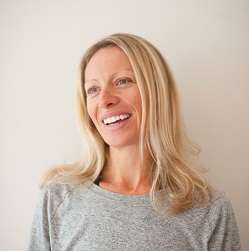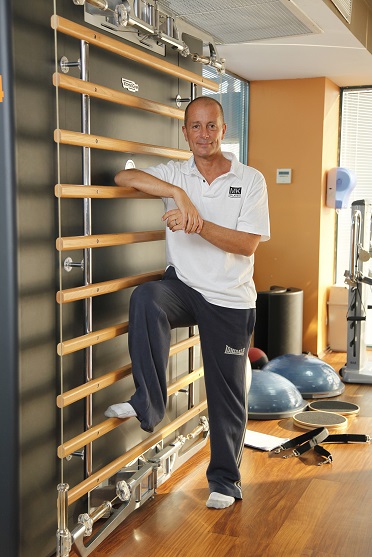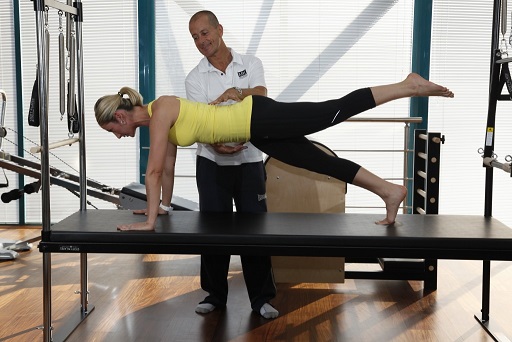This years Zest Convention in London September 21/22 brings again International Presenters from different schools of Pilates in a weekend of Pilates and Dance Sessions and workshop’s, with the purpose to inspire instructors to develop their methods of teaching.
Michael King the organiser of the event explains, “ I think we are all on a journey with our teaching, which is very exciting and each week I think how can I make this week different to the last week for my clients, what am I going to focus on this week? For this to happen we need feeding with ideas to allow the journey to happen and also with the latest information we can know about the body. This year we have some great fun and powerful sessions at the Convention. We have bodyART from Germany as well as the fabulous Michael Fritzke and Ton Voogt who were Romana’s main trainers for many years in the New York Studio, and now are known for their individual perspective and presentation style, but we also have some very specialised and complimentary sessions.
After going through my own cancer treatment this year and also knowing so many of my clients and friends have been touched by this disease in some way it was amazing and a real coincidence (if there is such a thing) that I was introduced to Lizzy Davis.
Lizzy works with cancer patients and survivors to improve or maintain their functional fitness. Her goal is to develop a safe, individually tailored and effective Exercise Programme. Working with cancer patients at all stages of their diagnosis, she quotes “We celebrate the fact that we ‘Can Exercise’ to be active against cancer.”
Evidence is now growing to support the role of physical activity, both during and after cancer treatment. Through keeping active you can preserve or improve physical function and psychological well being. It has also been proven that exercise can reduce the negative impact of some cancer-related side effects. Compelling research data also suggests that regular physical activity can reduce the risk of cancer recurrence, increasing longevity. Irrespective of your background, fitness level or experience – you can make exercise part of your recovery. The message “It’s your body, your health and your life, that you are fighting for. Be active against cancer! “
In 2011 Macmillan unveiled physical activity as the hidden wonder-drug so Lizzy developed her programme CanExercise to bring this knowledge direct to those living with or beyond cancer.
Many cancer survivors experience long-lasting physical and emotional consequences from their cancer and cancer treatments. These can include: fatigue, peripheral neuropathy, weight changes, urinary and bowel problems, osteoporosis, lymphoedema, cardiotoxicity, insomnia, depression, impaired range of movement, muscular de-conditioning, compromised memory and co-ordination. There are of course many more, but these certainly highlight why cancer is now considered to be a chronic illness, which requires long-term management.
Acute, chronic and late-appearing side effects and complications can impact severely upon the patient’s quality of life and health, often making the simplest of tasks and movements almost impossible. This can ultimately leave patients feeling depressed, overwhelmed and often frightened. Even when treatment has been considered a clinical success, many find it hard to rejoice in the survival when experiencing pain and limitations in physical functioning.
In 2010 a roundtable convened by American College of Sports Medicine (ACSM) considered all the studies addressing exercise and cancer survivorship. They concluded that exercise is safe both during and after cancer treatments, with impressive results in physical functioning, quality of life and cancer-related fatigue in several cancer survivor groups.
Prescribing exercise for cancer survivors can be complex, simply because cancer is not a homogenous disease and responses to a regimen may not be linear or predictable. For many survivors engaging in a physical activity programme might well be an entirely new experience, so an understanding of their motivations to exercise is necessary. These motives car vary considerably, such as having the flexibility to reach into kitchen cupboards, the strength to climb the stairs, to reduce their risk of cancer recurrence or developing other chronic diseases or simply to help them cope with their treatments and forget about their cancer and side effects for a while. For others it’s about having control again and returning to a normal lifestyle.
What type of Exercise is best ?
- Aerobic Exercise This involves activities that raise your heart rate by using large muscle groups for a prolonged period of time and are rhythmic in nature. Walking, swimming, cycling and jogging can all help to strengthen the heart and lungs, helping them to work more efficiently.
- Flexibility. Stretching exercises to help you bend and reach with ease. Exercises individually prescribed to, reduce muscle tension, increase range of movement, lengthen muscles, improve muscle capability and decrease muscle soreness.
- Resistance Training. Muscular strength and endurance training to prevent muscle wasting and disease related declines in muscle mass and bone density. Programmes can involve the use of weights, resistance bands and heart-flex, or focus more specifically on functional tasks to simply improve functional capacity, such as being able to sit to stand independently.
- Balance Rehabilitation Balance deteriorates with age, regardless of cancer however cancer treatments can compromise our sense of equilibrium considerably. This component of fitness can help to counter some of the effects of muscle imbalances and body asymmetry, especially after cancer surgery. Simple benefits can be experienced such as moving more freely and confidently and helping to reduce the risk of falling.
Lizzy has always been physically active, but firmly believes in doing something that is fun, fulfilling and most of all, effective. She also firmly believes that exercise is a critical and often overlooked component of a cancer patient’s recovery. ¨There is a real, definite need for this type of intervention throughout the cancer care pathway.¨ states Lizzy.
She qualified as a nurse in 1995 and swiftly moved into the speciality of Oncology at the Royal Marsden Hospital, London. It was here that she furthered her career by achieving a BSc Degree in Oncology Nursing whilst working on both the wards and the High Dependency Unit. She then moved to UCLH when she secured the more senior role of Clinical Nurse Specialist in Palliative Care and she remained at this post until starting her family in 2003. During this absence from nursing she suffered a personal tragedy when her mother was diagnosed with advanced lung cancer. Throughout this time she utilised her skills and expertise to care for her mum and was all too aware of how the disease and treatments were taking their toll, both physically and psychologically.
She has spent many years caring for a very diverse cancer population, where the ‘rest is best’ philosophy was generally encouraged. This over-emphasis on energy conservation definitely contributed towards a cycle of deteriorating physical functioning and accumulating fatigue that was hard to escape for many patients, including her mum. Lizzy states ¨It sounds really trivial, but some people simply can’t wash their own hair, reach into a cabinet or climb the stairs in their house. All this severely affects a person’s quality of life and I believe this must never be overlooked.¨
Exercise Benefits
The list below identifies the many benefits of physical activity.
Exercise can help to maintain…
- Independence
- Physical fitness
- Quality of life
- Ideal body weight/composition
- Motivation
Exercise can help to improve…
- Decreased sleep disturbances
- Energy levels and sense of well being
- Digestion and appetite
- Recovery from treatment
- Physical function – aerobic/strength/ROM
- Lifts mood
- Posture
Exercise can help to reduce…
- Fatigue
- Risk of other co-morbidities
- Risk of heart disease
- Anxiety / depression
- Pain
- Treatment-related side effects
- Risk of other cancers or recurrence
“Patient’s are strongly advised to avoid inactivity and return to normal daily activities as soon as possible after surgery and during adjuvant cancer treatments” American College of Sports Medicine
“Recent evidence highlights the importance of avoiding inactivity for all cancer patients. Those with complications or co-morbidities who can’t manage the moderate intensity exercise, should nonetheless aim to be as active as their abilities and condition allow.” British Association of Sport and Exercise Sciences.
The Programmes
She will develop creative exercise programmes based on the specific needs and goals that are unique to each individual. Key motivations, attitudes towards physical activity and exercise preferences will all be taken into consideration to ensure that clients feel comfortable, safe and well supported.
If you’ve been exercising for a long time, you may very well be able to continue on with your routine, however, you might need to make some modifications during your treatments. If you are new to exercise, Lizzy will start out slowly and gradually build-up your programme.
The first step will be to review the medical history and create an understanding of how you have been affected by cancer and/or subsequent treatments. Each programme will be comprised of a combination of strength, flexibility, balance and cardiovascular components, always based upon each individual client’s needs and physical limitations at the time.
The programmes are all based using the FITT principles.
| Frequency: | How often you should exercise |
| Intensity: | How hard you should exercise |
| Time: | How long you should exercise |
| Type: | What type of exercise you should do |
These are the key points;
- Aerobic capacity to see how well your heart and lungs are working
- Review of posture
- Flexibility measurements/range of movement
- Circumference measurements
- Muscular strength and endurance
- Body fat or BMI to determine your ideal weight
- Review blood profile with heath care professional if necessary
- Review functional capacity – in other words, how well you manage general activities of daily living
- Assess levels of fatigue, pain and psychological well being
Common Questions
Can you exercise during chemotherapy?
Yes you can. Chemotherapy is generally given in cycles and you will become increasingly more aware of your side effect patterns as the treatment progresses. The exercise programme I design will take these symptoms into consideration and perhaps suggest just light activity or taking a day off.
Can you exercise after breast cancer surgery?
Absolutely! Engaging in regular exercise will definitely help with the following;
- Improve your range of movementReduce or prevent any long term problems you might experience with arm and shoulder mobility
- Improve postureImprove the symptom of ‘cording’ – which is when you feel as though you have a tight cord in your affected arm running from your armpit down to your elbow, or sometimes down the whole length of the arm
- Prevent/improve lympoedema by encouraging the lymphatic system to work more effectively
What if I don’t feel well enough to exercise ?
That’s absolutely fine, there will be days when the treatment or the cancer is making you feel too unwell to exercise.
Too frightened to exercise…
The diagnosis and treatment can overwhelm and leave you with little inner strength. Exercise will help you to heal faster and in some cases help you to tolerate your treatment better. Physical activity is also something you can control, which can be very empowering. The most important thing is to do something, rather than do nothing. I can help you to choose an activity you enjoy and find rewarding. We will always begin slowly and allow for plenty of rest breaks.
Should I do aerobic or resistance exercises?
Ideally your programme should be a combination of the two, with the added components of flexibility and balance. This will give you the most satisfying results. However, if you have been confined to bed, then an initial resistance programme will be the best way to get you back on your feet again. Alternatively, if you have been feeling bereft of energy, aerobic exercise will help you get your endurance back, so you have enough strength and energy to get through the day.
How do I lose the weight I’ve gained on steroids and/or hormone therapy?
If you are still taking steroids or receiving hormonal therapy, you may find it quite difficult to lose weight. I will prescribe a safe and comprehensive physical activity programme that will focus on building lean muscle mass and losing body fat. With the help of a Nutritionalist/Dietician I am confident that you will start to see a difference. It may take a little time, but it will be worth all the effort and significantly improve your quality of life.
How can I regain my pre-cancerous strength and energy level?
If you are still receiving chemotherapy or radiotherapy treatment your body will not have the same physiological response to exercise as it will when your treatment is completed. This is largely due to the fact that all of your energy is going towards the healing process and fighting cancer. If you have been exercising throughout your treatment, your return to your pre-cancerous strength will be much quicker than if you have been sedentary. What is important is that you start slow and realize that there will have been a natural decline in your performance and that this is completely normal and to be expected. It is crucial that you progress according to how your body feels and tolerates each newly introduced exercise regime. I will encourage and motivate you all the way and with a bit of will-power and perseverance, you will return to your pre-cancerous strength and possibly more!
Why is my posture so bad following my mastectomy?
Many of us have poor posture. This is often as a result of being sedentary or sitting in front of a computer, which causes some degree of round shoulder syndrome from weak upper back muscles. Following a mastectomy, this can be exacerbated because scar tissue or adhesions across the mastectomy site become tight and also when there is an inherent ‘guarding’ of the area after surgery. The area needs to be sufficiently stretched and mobilised post operatively to prevent further posture deterioration. Muscle imbalances after a mastectomy +/- reconstruction are very common and these can be addressed with the proper combination of stretching and strength training.
As an older adult, how will my exercise regime differ from others?
If we don’t use our muscles, we lose our muscle mass, we lose our strength. This then contributes to feelings of fatigue and increases your risk of falling or incurring physical disability. So, in a nutshell, older people benefit from resistance training and aerobic exercise just as much as younger folks! Again, it’s imperative we begin slowly and choose activities you feel confident and competent in. For me there is little doubt that exercise is a wonderful way to keep the body and mind strong and youthful.
You can join Lizzy and all the presenters at the years event by visiting www.michaelkingpilates.com and registering online for the event
Words by Michael King.



